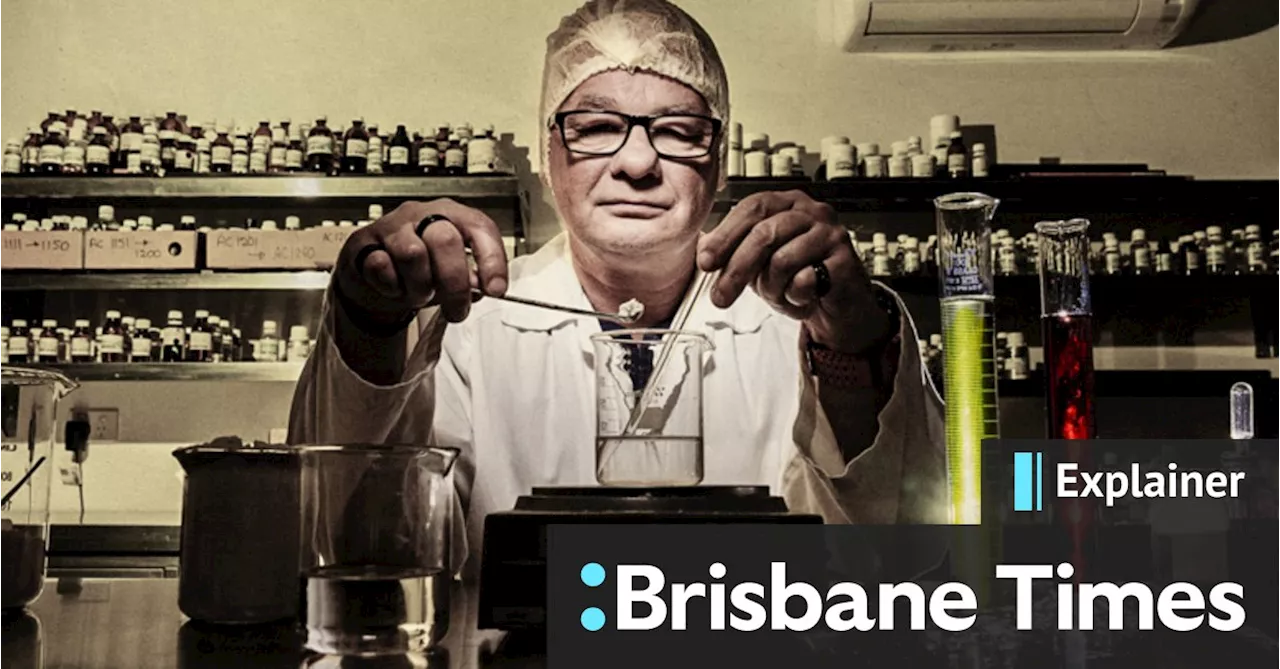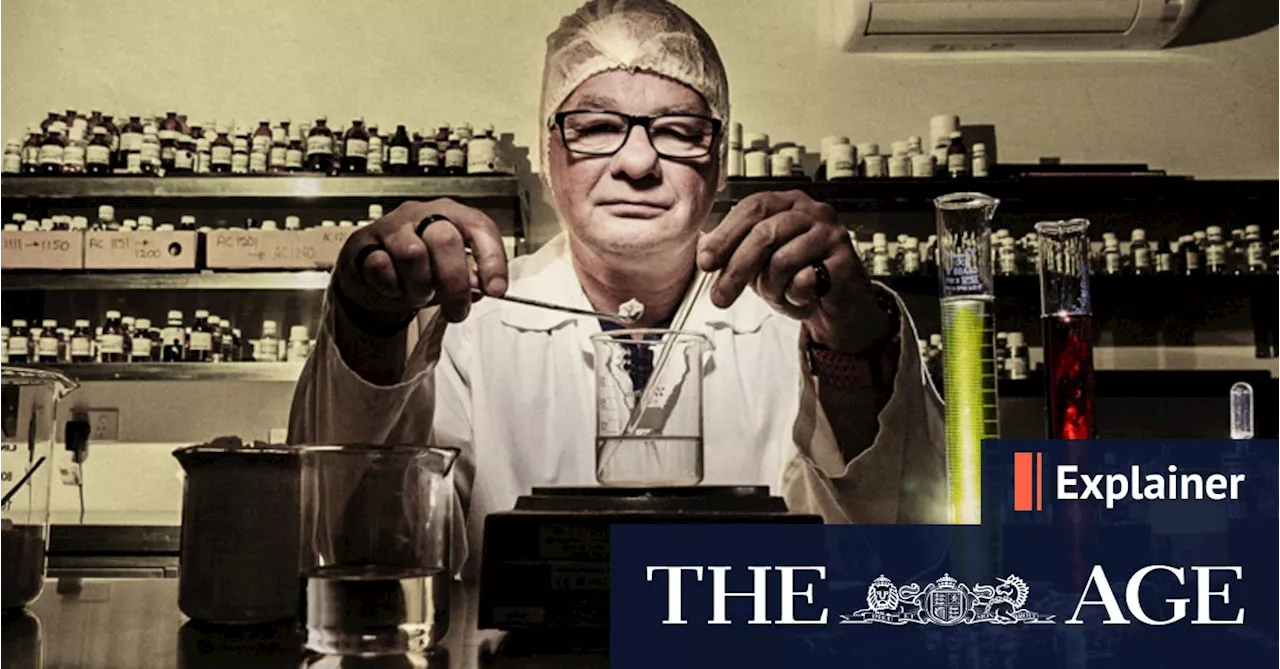This article delves into the fascinating world of flavor science, exploring how aroma chemicals are used to create the diverse tastes we experience in food and beverages. From the basic five tastes to the powerful influence of smell, the piece unravels the complex interplay of sensory perception that shapes our culinary enjoyment.
Bubblegum, beef, boysenberry. The shelves of Max Kleyn’s laboratory are lined with tiny bottles filled with big aromas. Sweet and fruity pineapple. Crisp and tart apple. Stewed Kakadu plum. If you’ve ever crunched into a choc-top ice-cream in a cinema, ate packet soup, or felt the tang of raspberry sherbet on your tongue, there’s every chance the flavour came from just a few drops of aroma chemicals like the ones in Kleyn’s lab.
Simply put, as we eat, some aromas waft into our nostrils to an olfactory system where sensory tissues behind the nose convert them into electrical signals to the brain. When we chew, we also push aromas to the back of our throat and up onto those same sensory tissues. Smelling via the nostrils is called orthonasal olfaction, whereas aromas we experience while chewing are retronasal olfaction.
What other simple tricks can enhance flavour? “I think there are limits,” he says, “but put down some heavy cutlery, and it will immediately taste better. Play some classical music – cues of quality and class. Put it on an Instagrammable plate that makes an impression. And think about what to call it, don’t just serve it; give it a nice descriptive sensory label. Tell a joke before you serve it, as a mental palate cleanser.
The Kensington Pride mango, for example, is known for its sweetness but, in the 1980s, Australian growers cultivated a new offspring with less acidity and a longer shelf life called the R2E2 mango. “We grow things to a certain taste because we know which genes cause which flavours and which colours and which textures,” says Smyth. “We’ve helped the national papaya breeding program breed to select new red papaya varieties with improved consumer texture, colour and flavour.
Tapping into how we learn to like different flavours is where a great deal of the artistry lies. Sometimes, it’s a twist on a childhood memory or a fusion that introduces something new, such as Korean tacos. Says Liaw: “We’re curious about food, and we want to try new things and adapt into new spaces, walk nomadically across continents and learn to eat foods as we travel. That’s an important instinct that we have, which is why we like new things.”Then there’s biology.
Outside the world of chemistry and food science, reckons Liaw, “There’s no chef that comes up with a new flavour ... It’s taking ingredients, usually from another culture, and then using it in a different one.” Black pepper, used in South-East Asian and Indian cuisine since at least 2000 BC, was considered wonderfully exotic in places such as ancient Rome, where it was “bought by weight like gold or silver,” wrote historian Pliny the Elder.
Food & Drink FLAVOR AROMA CHEMICALS SENSORY PERCEPTION OLFACTION TASTE REPTORS
Australia Latest News, Australia Headlines
Similar News:You can also read news stories similar to this one that we have collected from other news sources.
 The Science of Flavor: How Our Noses and Brains Create TasteThis article explores the fascinating world of flavor, delving into the complex interplay of aroma, taste, perception, and even sound. From the art of mixing aroma chemicals to the science behind taste receptors and cross-modal perception, the article reveals how our senses work together to create the rich tapestry of flavors we experience.
The Science of Flavor: How Our Noses and Brains Create TasteThis article explores the fascinating world of flavor, delving into the complex interplay of aroma, taste, perception, and even sound. From the art of mixing aroma chemicals to the science behind taste receptors and cross-modal perception, the article reveals how our senses work together to create the rich tapestry of flavors we experience.
Read more »
 The Science of Happiness: Preregistration and Open ScienceThis article explores the scientific study of happiness, highlighting the rise of Positive Psychology and the subsequent challenges faced by the field. It discusses the issue of flawed research practices like p-hacking and HARKing, and how the movement towards Open Science, with preregistration as a key standard, aims to address these problems.
The Science of Happiness: Preregistration and Open ScienceThis article explores the scientific study of happiness, highlighting the rise of Positive Psychology and the subsequent challenges faced by the field. It discusses the issue of flawed research practices like p-hacking and HARKing, and how the movement towards Open Science, with preregistration as a key standard, aims to address these problems.
Read more »
 Science-Backed Tips for Improving Your Cat's LifeLearn how to understand your cat's body language, provide enriching experiences, and build a strong bond based on respect and communication.
Science-Backed Tips for Improving Your Cat's LifeLearn how to understand your cat's body language, provide enriching experiences, and build a strong bond based on respect and communication.
Read more »
 Must-Read Books of 2025: From Memoir to ScienceThis article highlights anticipated book releases for 2025, focusing on compelling memoirs, particularly Helen Garner's exploration of family and relationships, and insightful scientific works.
Must-Read Books of 2025: From Memoir to ScienceThis article highlights anticipated book releases for 2025, focusing on compelling memoirs, particularly Helen Garner's exploration of family and relationships, and insightful scientific works.
Read more »
 Science and Technology Predictions for 2025A special episode of The Conversation Weekly podcast discusses key developments in science and technology expected in 2025, including advancements in AI, space missions, and more.
Science and Technology Predictions for 2025A special episode of The Conversation Weekly podcast discusses key developments in science and technology expected in 2025, including advancements in AI, space missions, and more.
Read more »
 The Science of Happiness: Finding Real EvidenceThis article explores the scientific study of happiness, highlighting the challenges and advancements in the field. It discusses the rise of Positive Psychology, the subsequent crisis of reproducibility in research, and the emergence of preregistration as a standard for transparency and reliable findings.
The Science of Happiness: Finding Real EvidenceThis article explores the scientific study of happiness, highlighting the challenges and advancements in the field. It discusses the rise of Positive Psychology, the subsequent crisis of reproducibility in research, and the emergence of preregistration as a standard for transparency and reliable findings.
Read more »
